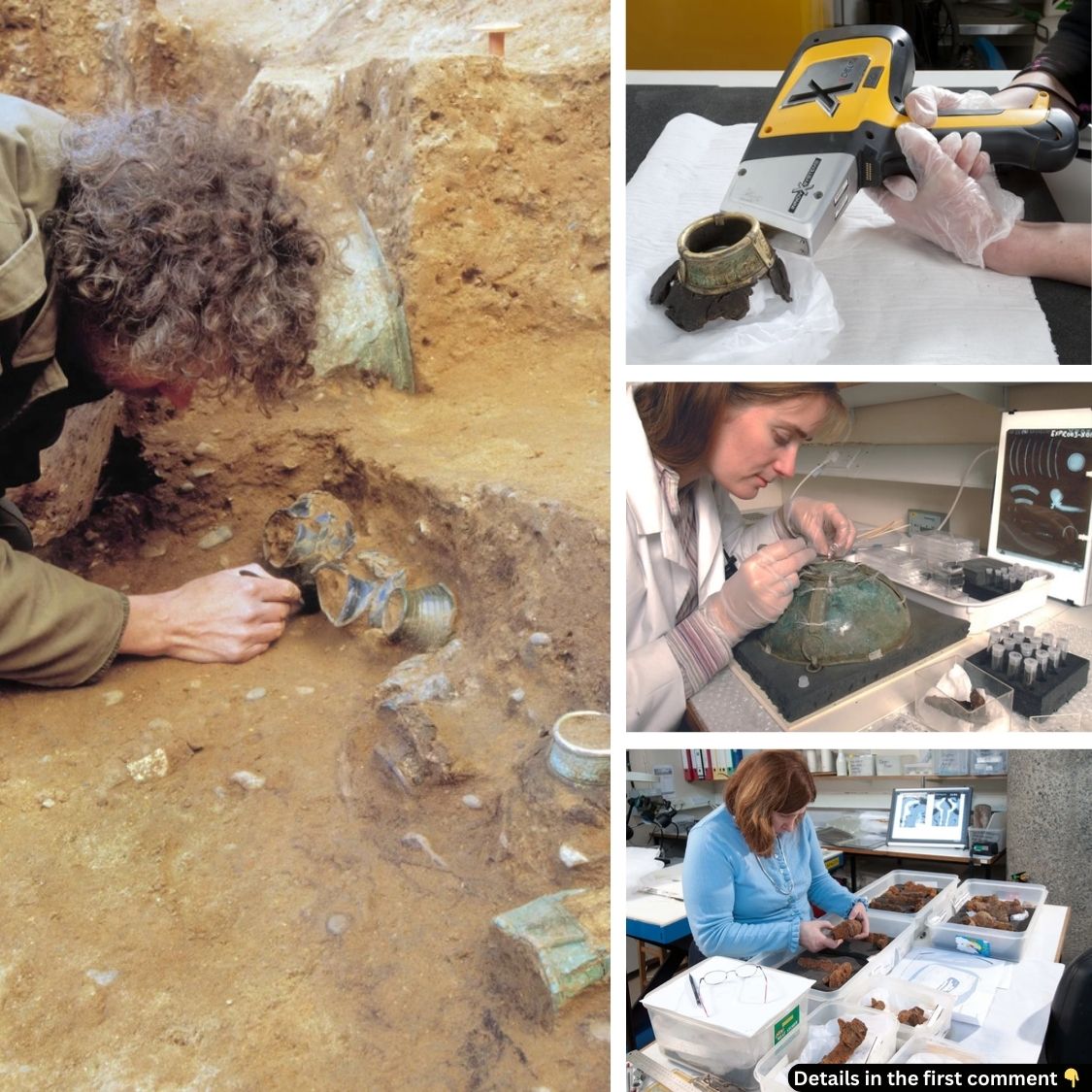In 2003, an archaeological discovery in Essex, England, uncovered one of the most significant finds in Anglo-Saxon history: the burial site of an aristocratic prince. The Prittlewell tomb was a remarkable time capsule, revealing a wealth of artifacts that span centuries of cultural influences, from gold-foil crosses symbolizing early Christianity to garnets from India decorating a lyre. This treasure trove not only offers a glimpse into the lifestyle of Anglo-Saxon elites but also sheds light on the evolution of burial customs and the intersection of pagan and Christian beliefs in early medieval England.
The Discovery of the Prittlewell Tomb
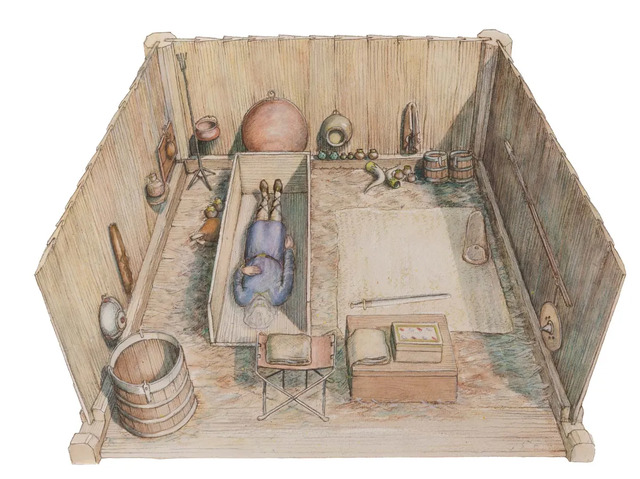
The Prittlewell tomb was discovered during an archaeological survey preceding a road-widening project. Hidden beneath a burial mound, the site had remained largely undisturbed for over 1,400 years. As archaeologists began their excavation, they unearthed a burial chamber built from timber, with elaborate grave goods that hinted at the high status of the deceased.
The craftsmanship of the burial chamber was staggering, requiring 13 oak trees and an estimated 113 person-days of labor to construct. The presence of gold-foil crosses and other luxurious items suggested that the deceased was a man of great importance, likely an Anglo-Saxon prince, whose tomb has provided invaluable insights into the world of early Anglo-Saxon royalty.
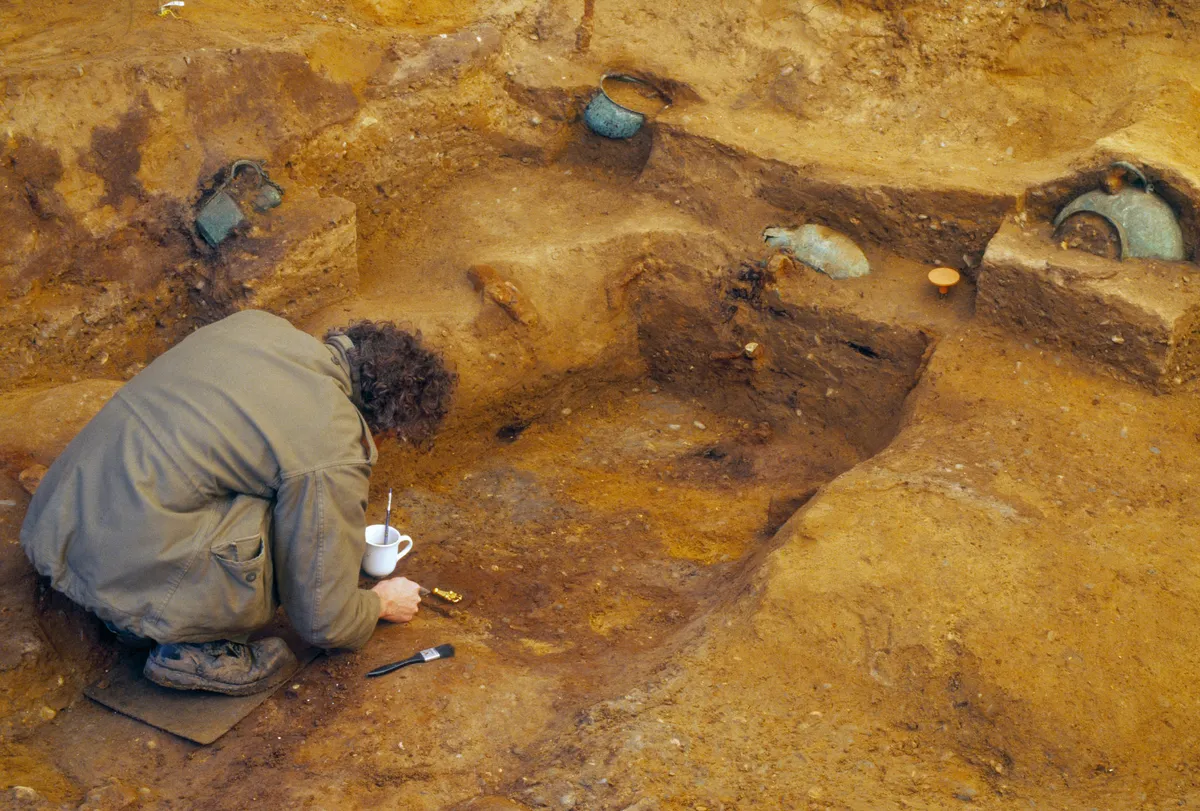
Video
Check out this video to discover the incredible treasures unearthed from an Anglo-Saxon tomb.
Christian Influence: Early Anglo-Saxon Christianity Revealed
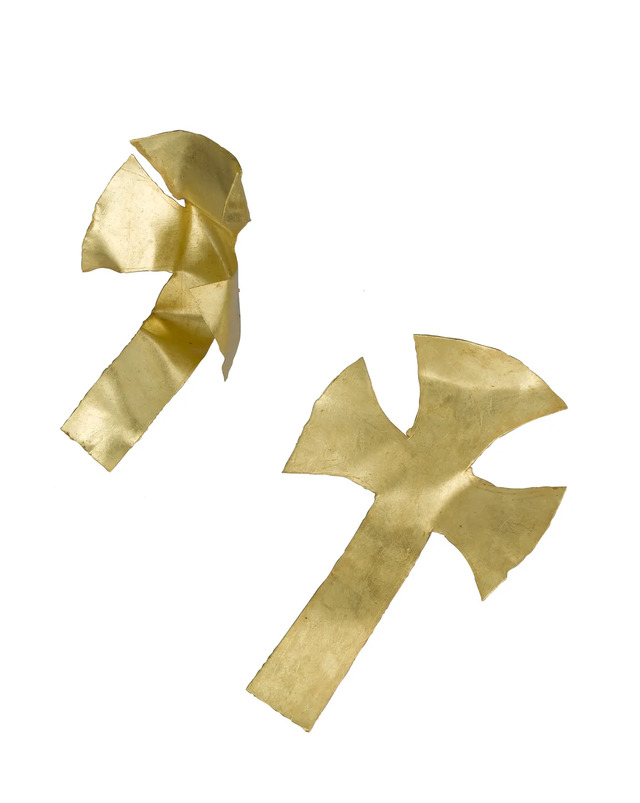
One of the most fascinating discoveries in the Prittlewell tomb is the presence of two gold-foil crosses found near the prince’s head. These artifacts point to the early Christian influence on the Anglo-Saxon elite, making the tomb one of the earliest Christian burials in England. The crosses were likely placed over the prince’s eyes, a practice associated with Christian burial rites of the time. While the prince’s identity remains unknown, archaeologists speculate that he could have been related to King Saebert, a Christian Anglo-Saxon ruler who died in A.D. 616. The combination of these Christian symbols with other items from the pre-Christian Anglo-Saxon culture highlights the complex religious transitions occurring during this period.
Clutching Gold: The Coins and Symbolism of Wealth

Perhaps one of the most striking finds was the discovery of gold coins found in the prince’s hands. These coins, likely placed there for symbolic purposes, indicate the wealth and high status of the individual interred in the tomb. The prince’s high rank is reinforced by the gold’s rarity and symbolic value in Anglo-Saxon society. The placement of the coins, positioned where the prince’s hands would have been, suggests that the wealth of the deceased was of great importance in his journey to the afterlife. It serves as a testament to the significance of gold as a symbol of power and status in early Anglo-Saxon England.
Key Artifacts: Belt Buckles, Drinking Horns, and More
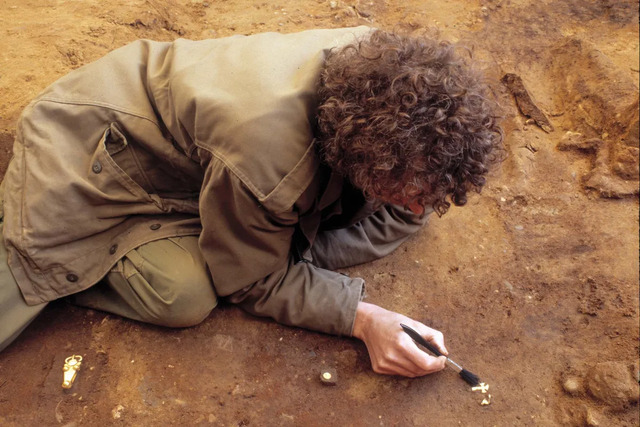
Among the most impressive artifacts found in the tomb was a triangular gold belt buckle, designed specifically for the prince’s burial. This ornate belt buckle, which would have been worn to secure the prince’s tunic, is a clear indicator of his royal status. The craftsmanship involved in creating such a piece highlights the skill of Anglo-Saxon artisans and the high level of cultural sophistication at the time. In addition to the belt buckle, a drinking horn was found near the prince’s coffin.
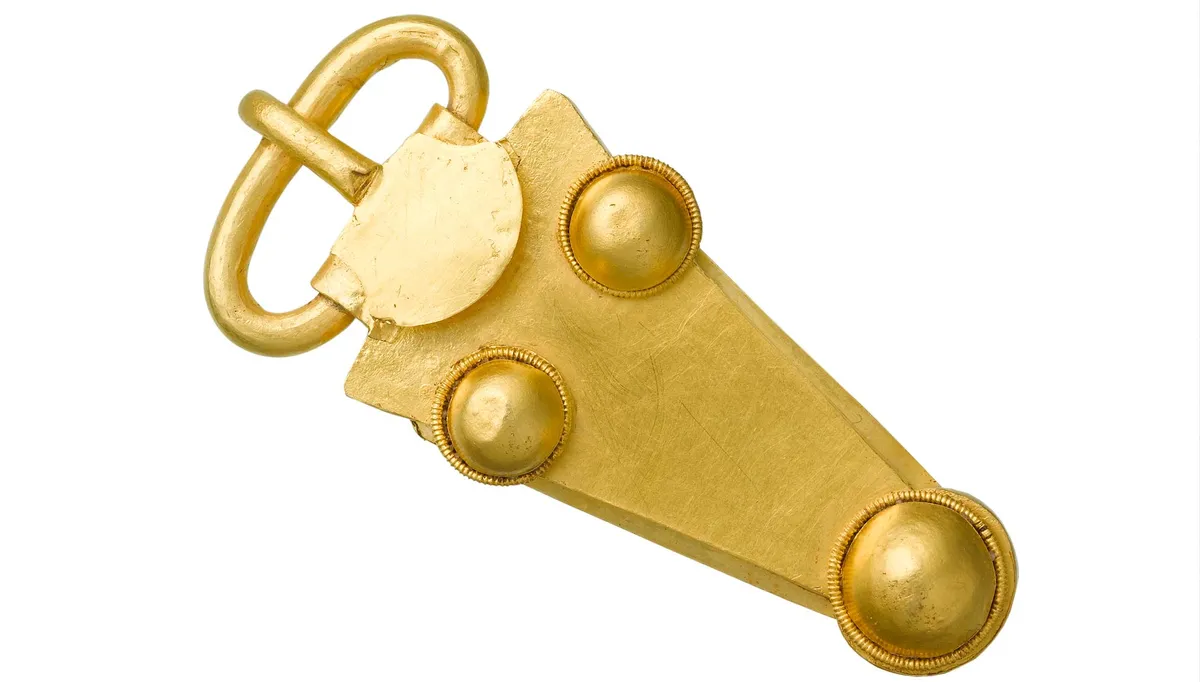
This object, along with the other drinking vessels in the tomb, adds to the idea that the prince’s burial was intended to provide for him in the afterlife. Drinking horns were high-status objects, symbolizing not just wealth, but also the prince’s association with ceremonial rituals and feasting.

Drinking Vessels and Afterlife Rituals: Cups, Flagons, and Cauldrons
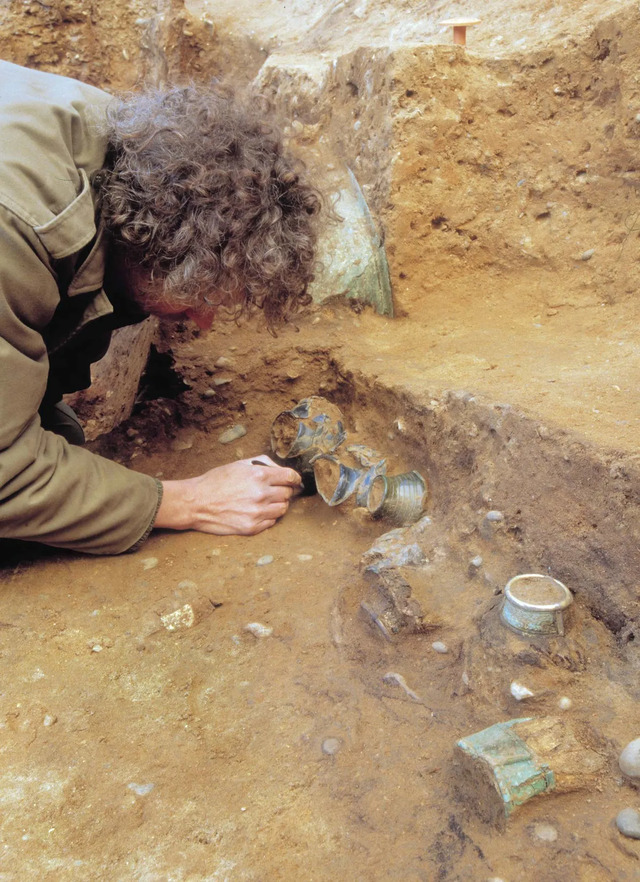
The tomb also contained a variety of drinking vessels, including cups, flagons, and a large cooking cauldron. These items are likely related to Anglo-Saxon burial customs that involved providing food and drink for the deceased in the afterlife. The presence of such vessels in the prince’s tomb suggests that elaborate rituals were part of the burial process, ensuring that the deceased would have everything needed for a prosperous afterlife. Archaeologists believe that these vessels could have been filled with food and drink for the prince to enjoy in his eternal rest.
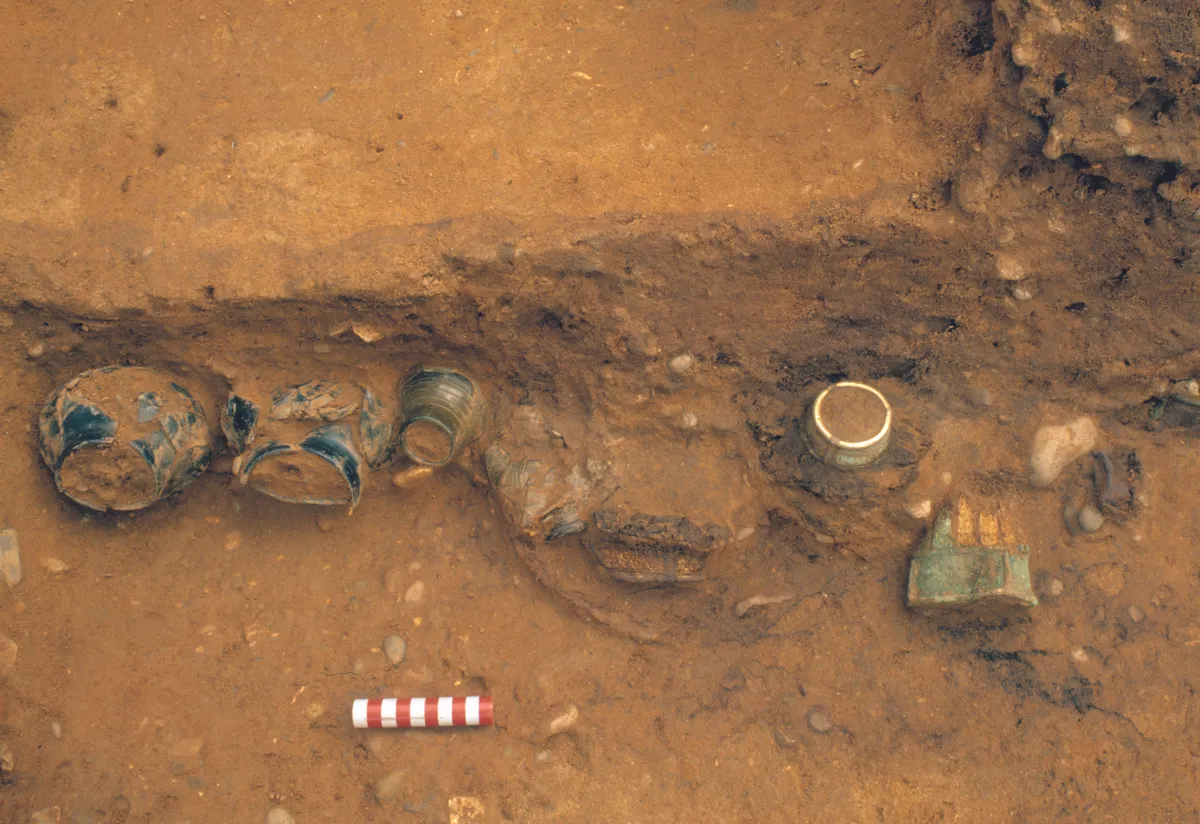
Lyre: Musical Heritage and Cultural Connections
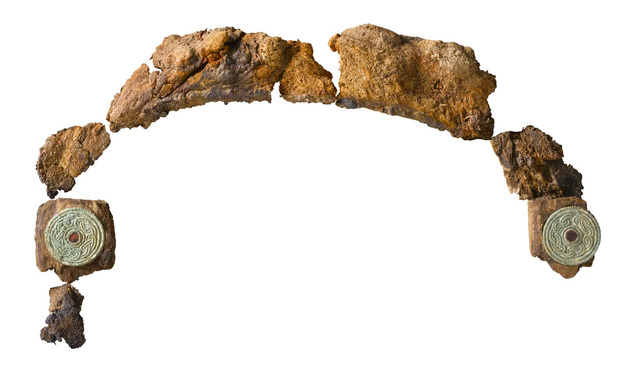
Another remarkable find was the lyre, a stringed musical instrument that has been partially reconstructed by archaeologists. The lyre’s metal remnants and the garnets embedded in its fittings reveal that the prince may have had a fondness for music and culture. The garnets, originating from India, further highlight the prince’s high status and the global connections of the Anglo-Saxon elite. The lyre’s inclusion in the tomb, along with the decorative craftsmanship, suggests that music was an important part of the prince’s life and social rituals. The instrument, likely used for ceremonial purposes, represents not only the cultural practices of the time but also the prince’s aristocratic lifestyle.
Glass Beakers: Rare Finds from the Past
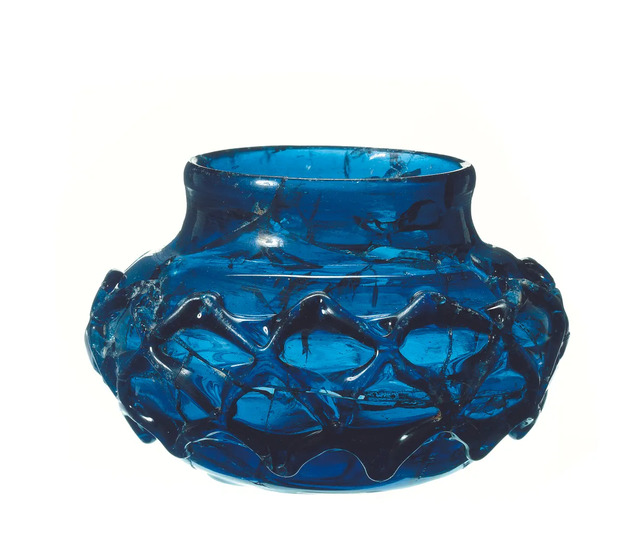
Among the most significant discoveries were two blue glass beakers, found intact near the coffin. These beakers are incredibly rare for this time period and reflect the prince’s wealth and access to luxury goods.
The presence of green glass beakers in the chamber further emphasizes the prince’s high status and the elite nature of his burial. The rarity and fragility of these glass items underscore the importance of these objects in the burial rites and rituals of the period. They also point to the cultural exchanges between different regions, as such glass items were not commonly found in Anglo-Saxon burials.
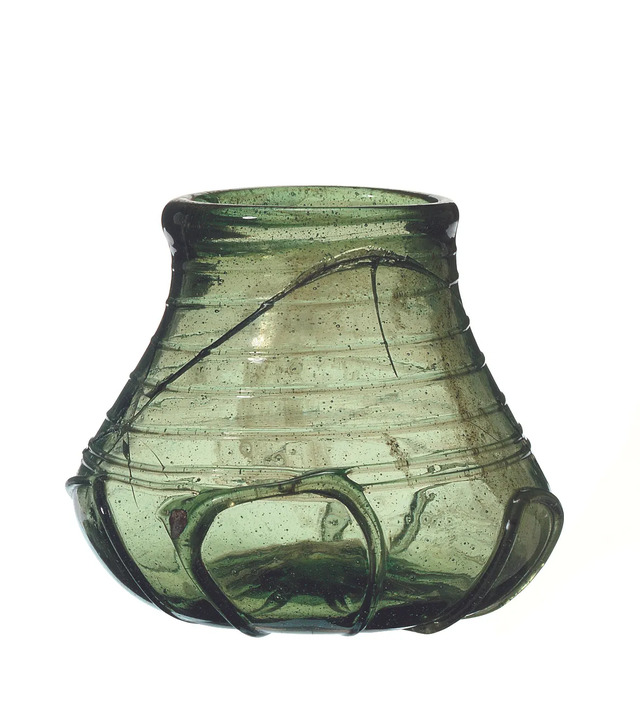
Copper Flagon: Mediterranean Influences
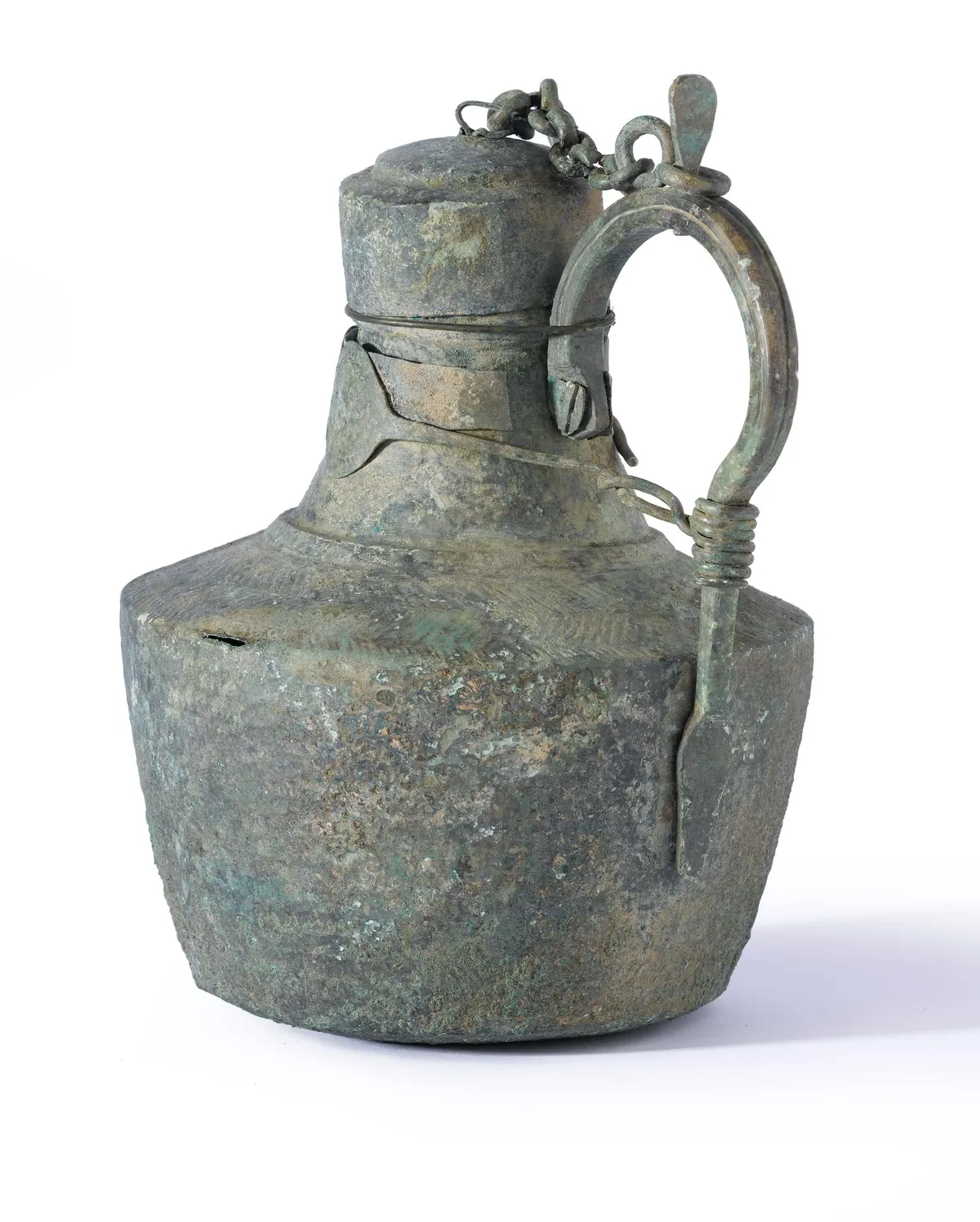
Another intriguing discovery was a copper-alloy flagon, decorated with images of St. Sergius, a fourth-century Christian saint. Likely originating from the Mediterranean, possibly Syria, the flagon reflects the prince’s ties to Christian pilgrimage traditions. The presence of this artifact highlights the prince’s connection to religious practices beyond England, further reinforcing the cross-cultural interactions of the time.
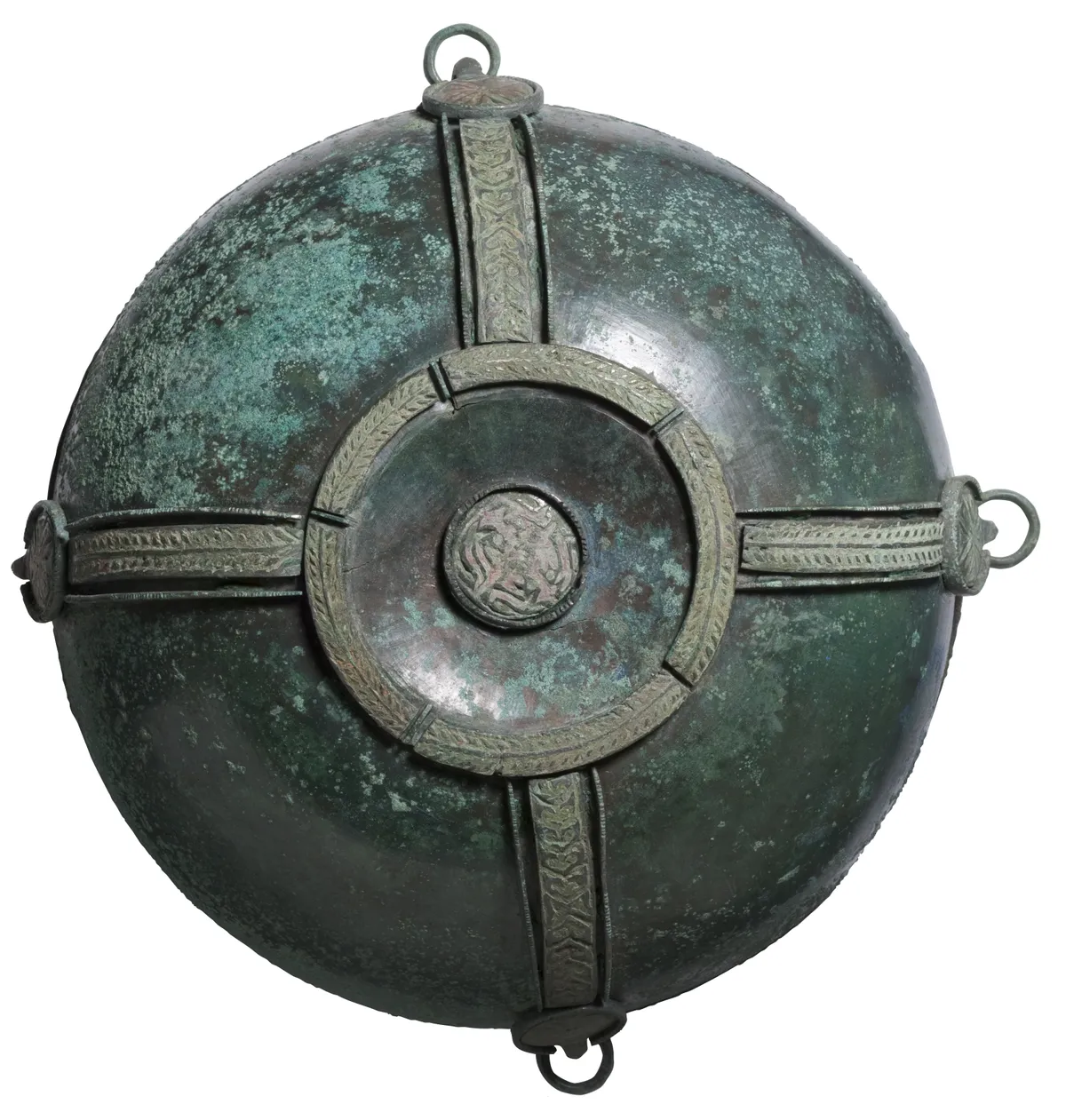
Fragile Remains: Preserved Organic Materials
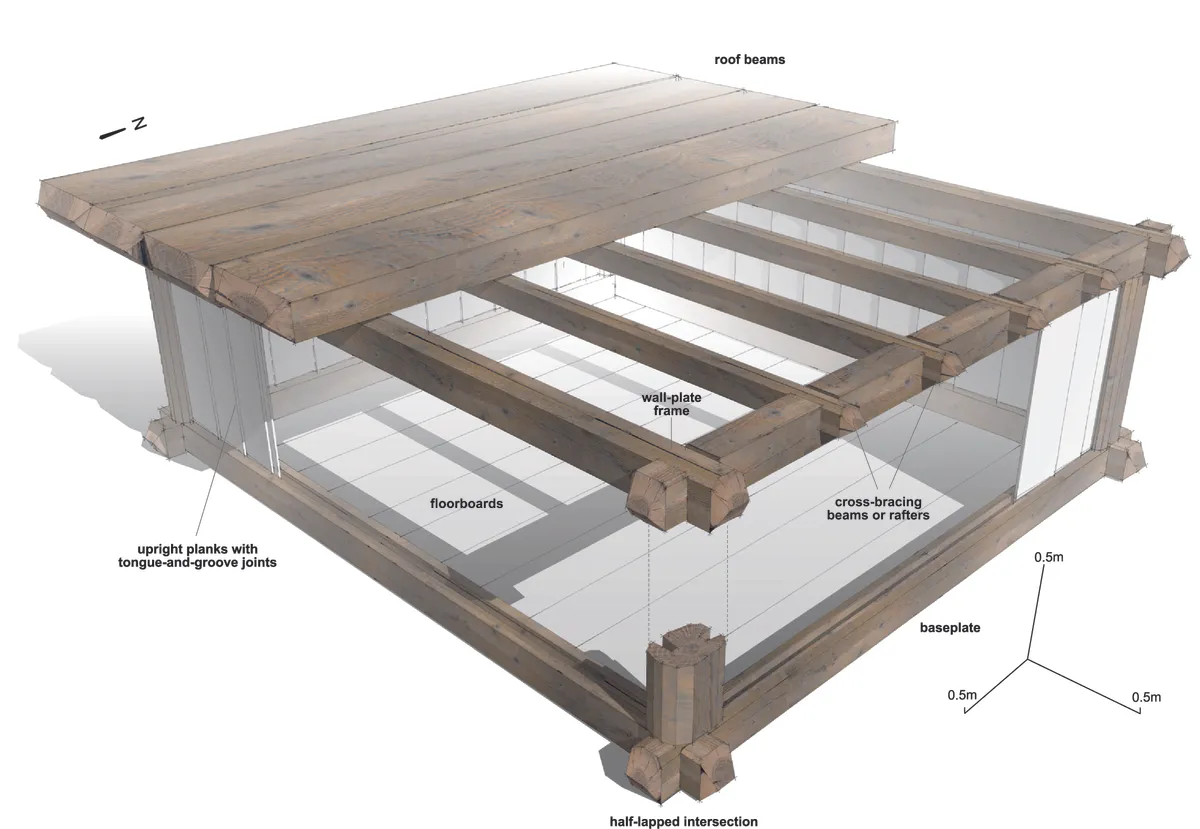
Despite much decay, mineral-preserved wood fragments were recovered, offering key insights into the construction of the burial chamber. These fragments allowed archaeologists to virtually reconstruct parts of the chamber’s timber structure, revealing the architectural practices of the Anglo-Saxons. The preservation of such materials is rare and provides an invaluable link to understanding the methods and craftsmanship used during the period.
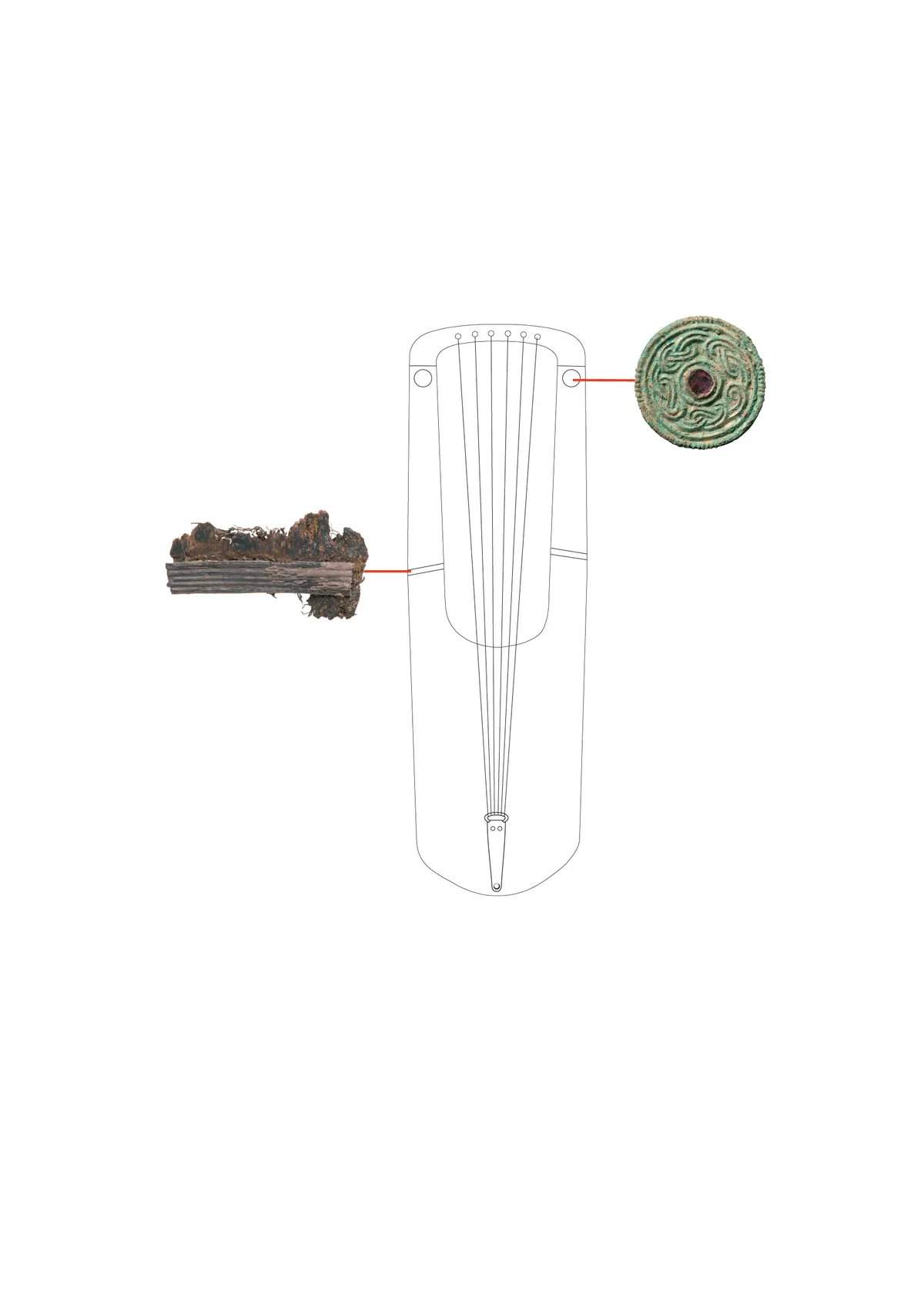
Wall Hooks: Practical Tools and Symbolic Rituals

Wall hooks, used to hang bowls, vessels, and possibly textiles, were found along the chamber’s walls. These iron hooksserved practical purposes but also contributed to the overall burial experience. They enabled the hanging of ritual objects that were essential for the prince’s afterlife.
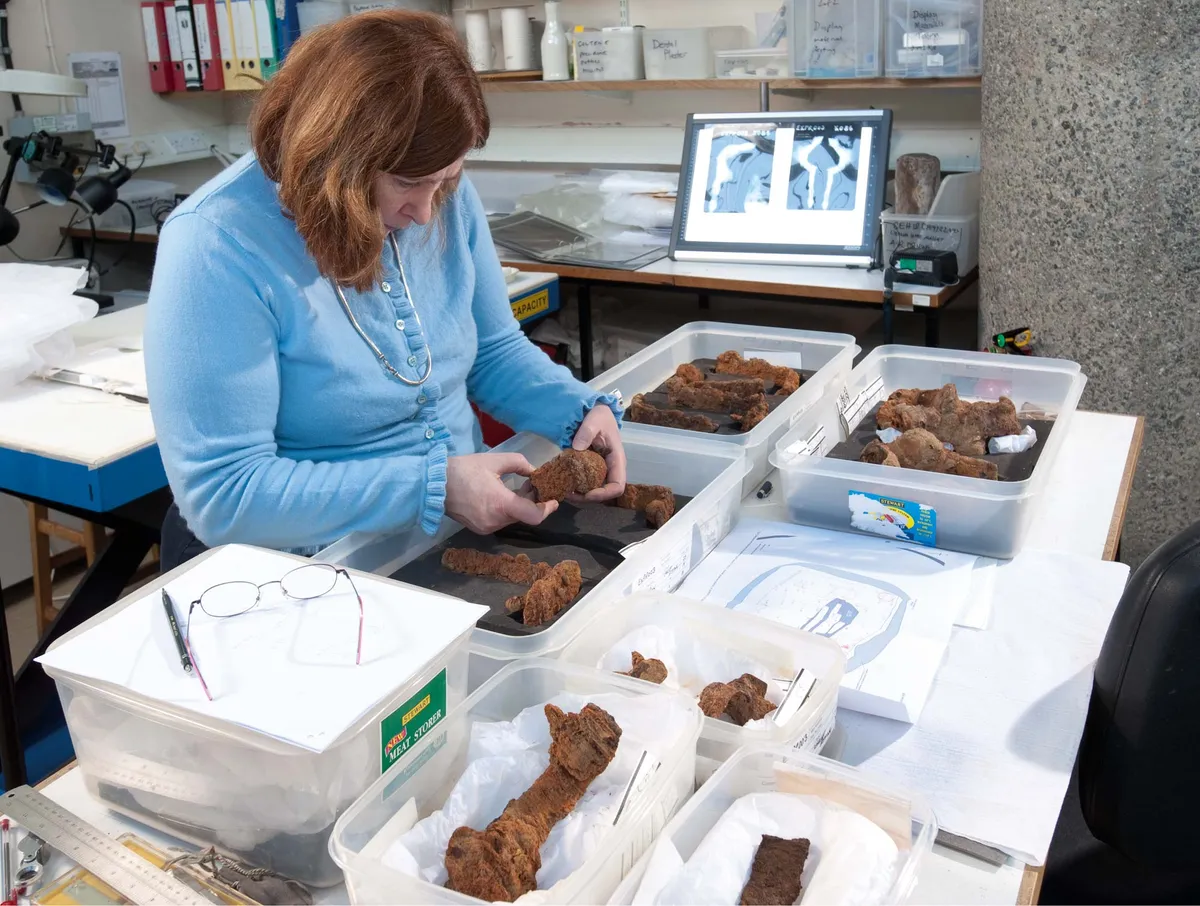
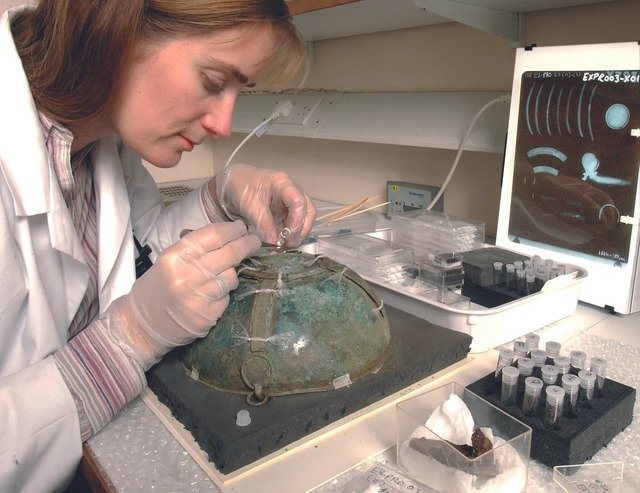
The discovery of mineral-preserved wood attached to these hooks provided crucial clues about the burial chamber’s construction, helping archaeologists to reconstruct the chamber’s original form.
Green Glass and Gilded Necks: Decorative and Ceremonial Significance
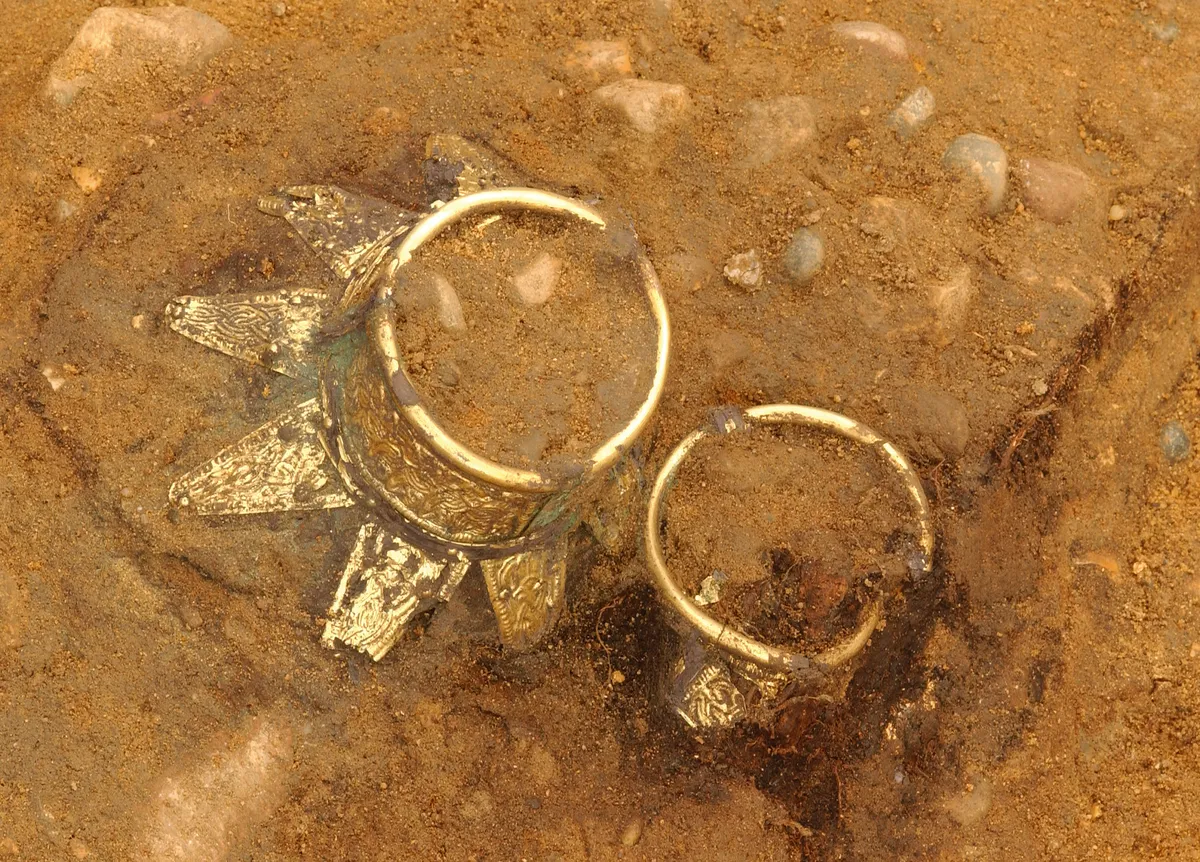
Among the other important finds were green glass beakers and gilded necks of drinking vessels. These items are not just decorative; they signify the high status of the deceased. The presence of such objects in the tomb highlights the importance of wealth and ritual in Anglo-Saxon burial practices.
The gilded necks were likely used for ceremonial purposes and represent the prince’s position within Anglo-Saxon society. These objects, along with the other luxury items in the tomb, suggest that the prince was a powerful and influential individual who commanded great respect.
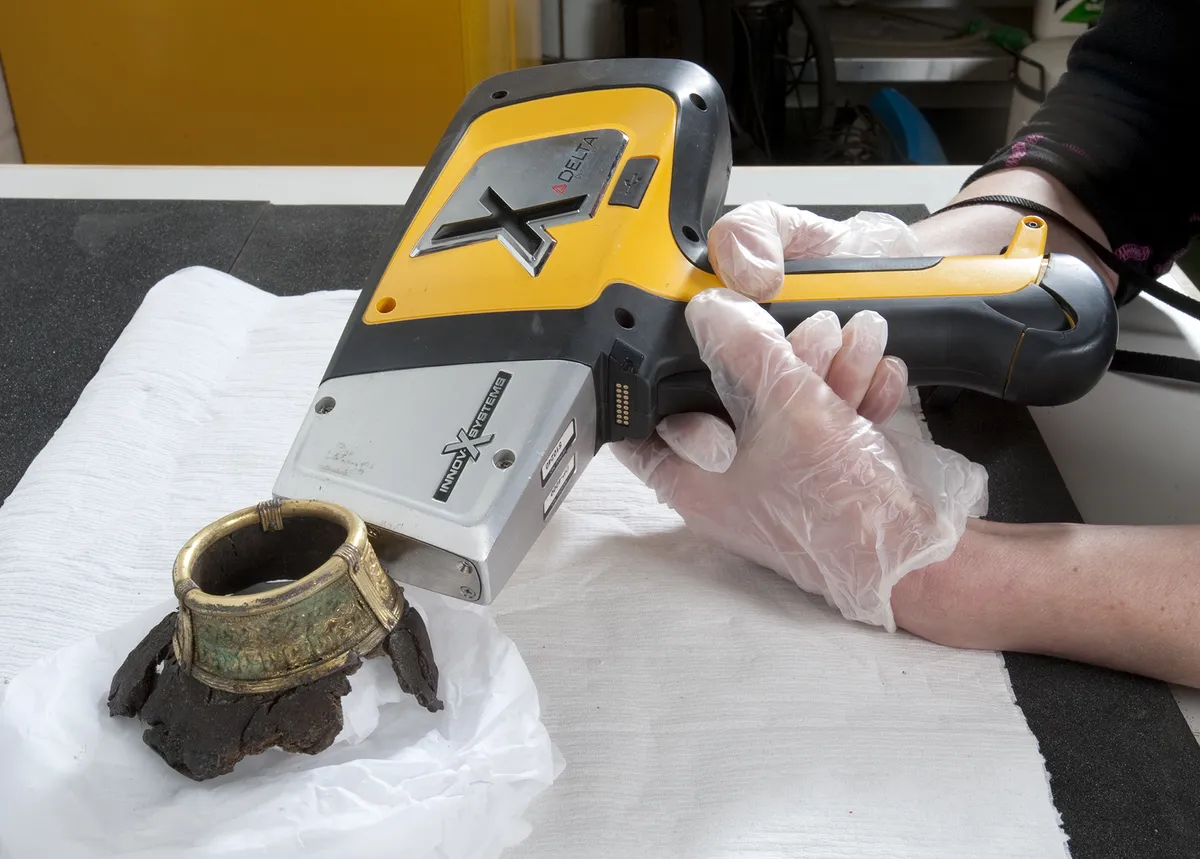
Painted Wood: A Fragile Legacy of Anglo-Saxon Artistry
The discovery of painted wood from a decorative box, which once housed a silver spoon from the Mediterranean, was one of the most delicate finds. This is the only surviving example of early Anglo-Saxon painted woodwork. The red and yellow ochre pigments used on the box’s lid showcase the intricate artistry of the period, with patterns reflecting Anglo-Saxon jewelry design. This rare artifact adds another layer of understanding about the cultural practices and artistic achievements of early Anglo-Saxon society.

Conclusion: The Lasting Legacy of the Prittlewell Burial
The discovery of the Prittlewell tomb provides valuable insights into the Anglo-Saxon elite and the complex cultural landscape of early medieval England. The artifacts found within the burial chamber tell the story of a society at the crossroads of religious and cultural transformation. From gold coins to exotic glass beakers, each artifact offers a glimpse into the life of an Anglo-Saxon prince whose wealth, power, and cultural connections left a lasting legacy. This remarkable find has reshaped our understanding of early Anglo-Saxon burial practices, Christianization, and the cultural richness of the time.
Video
Don’t miss this video that takes you inside the tomb of the Scythian Prince in Kazakhstan, where ancient secrets are revealed.
